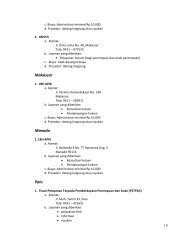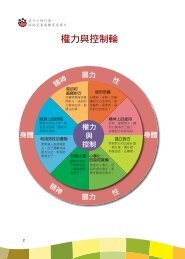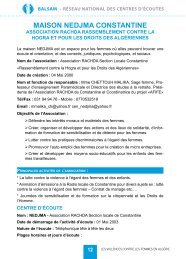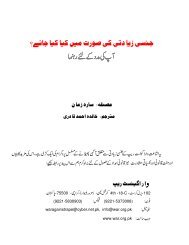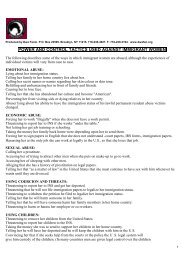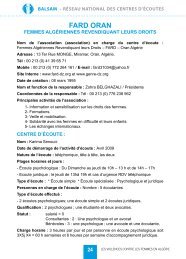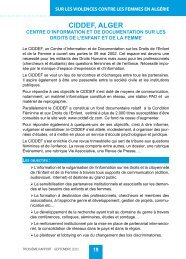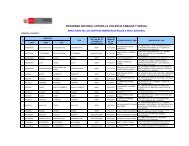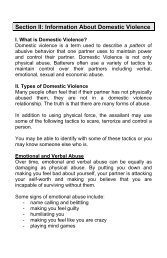Domestic Violence Counseling Manual - Hot Peach Pages
Domestic Violence Counseling Manual - Hot Peach Pages
Domestic Violence Counseling Manual - Hot Peach Pages
Create successful ePaper yourself
Turn your PDF publications into a flip-book with our unique Google optimized e-Paper software.
issues and domestic violence; they serve the entire Cayo district of 52,564 people (according to the<br />
2001 census). Both institutions are understaffed. Since there is only one officer in each of the <strong>Domestic</strong><br />
<strong>Violence</strong> Units there is no twenty-four hour, let alone seven days a week, service. Likewise, the Women's<br />
Department is operated by one person who works normal office hours five days a week.<br />
The 1992 <strong>Domestic</strong> <strong>Violence</strong> Act of Belize defines domestic violence as: “The abuse of any member of a<br />
family by any other family member.” Victims of domestic violence can be someone involved in an<br />
intimate relationship, any family member or a dependent of someone in a family. Under the 1992<br />
<strong>Domestic</strong> <strong>Violence</strong> Act of Belize, the following people can apply for help under this act:<br />
• Spouses: Legally married husbands and wives; common-law husbands and wives; Ex-husbands<br />
and wives (including common-law); persons who have produced a child<br />
• Children: A child of a union (common-law or legal); a step-child; an adopted child; a child<br />
being brought up in the home<br />
• Dependents: A person who is over eighteen years of age who, because of physical or mental<br />
disability, relies on another person for his/her welfare<br />
• Parents: a natural parent or grandparent; a step-parent or step-grandparent; an adoptive parent or<br />
grandparent; a guardian; any person who has actual custody of a child<br />
Under the 1992 <strong>Domestic</strong> <strong>Violence</strong> Act, these people also have the option to press specific charges of<br />
abuse, to apply for legal protection from their abuser, to log a report of domestic violence (for future<br />
reference and evidence should the matter be taken to court) and/or to receive counseling (though this<br />
service is limited). However, in general women are uninformed about their legal rights and therefore do<br />
not report domestic violence. A woman will often drop the charges or application for protection at a later<br />
date (estimated at ninety nine percent by the San Ignacio <strong>Domestic</strong> <strong>Violence</strong> Unit officer). This is due to<br />
a variety of reasons, namely, she is intimidated by the legal process; she is punished by the abuser for<br />
involving the law; she is persuaded by the abuser to drop charges; she does not want to split the family<br />
up.<br />
LEGAL OPTIONS<br />
To get a Protection and/or Occupation Order the woman must prove abuse, fear, and the presence of<br />
mental or physical injury. This is not to say that if she cannot prove these three things, that her situation<br />
is not dangerous, only that she will have to pursue a course of action that doesn’t rely on the judicial<br />
system.<br />
If a request for protection is successfully brought against the perpetrator the court can issue a restraining<br />
order, either a Protection Order or/and an Occupation Order, under the 1992 <strong>Domestic</strong> <strong>Violence</strong> Act. It is<br />
possible to issue both types of orders or to issue either for a longer time-period than the usual 12-month<br />
30-56



